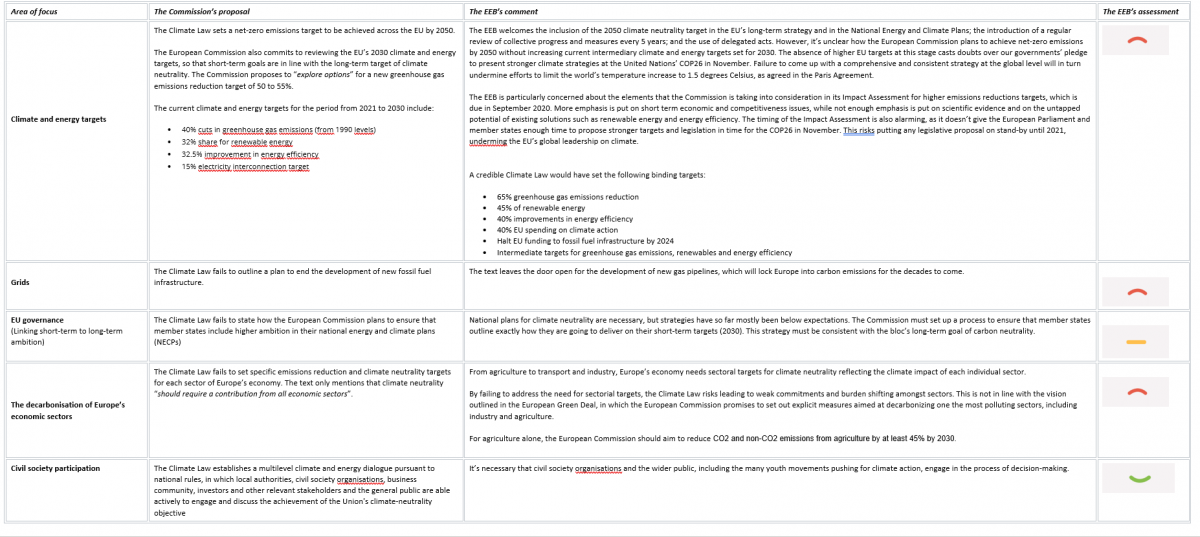EU climate law: more ‘man stuck in traffic’ than ‘man on the moon’
The EU’s newly released proposal to address the climate emergency fails to live up to Green Deal promises. Without higher targets and concrete measures now, Europe risks missing its chance of reaching climate neutrality by 2050.
The EU has missed an opportunity to boost its climate neutrality efforts, said the European Environmental Bureau (EEB) following today’s publication of the Climate Law. [1]
The proposed regulation sets out a binding EU target to achieve net-zero carbon emissions by 2050, which is now enshrined in EU climate policy. However, it failed to stress the need for higher 2030 targets concerning emissions reduction, renewable energy and energy efficiency.
Barbara Mariani, Policy Manager for Climate and Energy at the EEB, said:
“Today’s climate law is another serious missed opportunity. Climate action enjoys incredibly strong support among the public, with 92% of EU citizens wanting their governments to set more ambitious targets. By delaying action on increasing the EU’s 2030 climate targets and outlining concrete policy measures, Europe’s‘man on the moon moment’ looks a lot more like‘man stuck in traffic’. It’s essential that the European Parliament and member states drive higher ambition in this law to ensure that Europe embraces its responsibilities.”
EU Commission President Ursula von der Leyen had previously described the Green Deal as Europe’s “man on the moon moment.”
Despite welcoming the inclusion of the 2050 climate neutrality target and the promise to consult NGOs when reviewing policies and targets, the EEB analysis concludes that the Climate Law istoo little, too late. The regulation risks slowing down the political momentum created by the EU institutions following the publication of the European Green Deal [2] and the EU elections last year.
There is a significant gap between the political statements in the recitals, which list all the evidence and the commitments undertaken by the EU institutions, and the content of the proposal itself, which falls short of those preliminary arguments.
In order to pursue efforts to limit the world’s temperature increase to 1.5 degrees Celsius as agreed in the Paris Agreement, global emissions must be halved in the next decade. This means cutting global emissions by around 8% every year, starting today. [3]
If we accept the science behind these calculations, the EU executive should have set a 65% emissions reduction target by 2030 instead of promising to “exploring options” and “consider taking the necessary measures”.
Increasing targets for climate action enjoys huge public support. The most recent Eurobarometer found 93% of EU citizens see climate change as a serious problem and 92% support the EU’s climate neutrality goal. [4]
The EEB assessment


